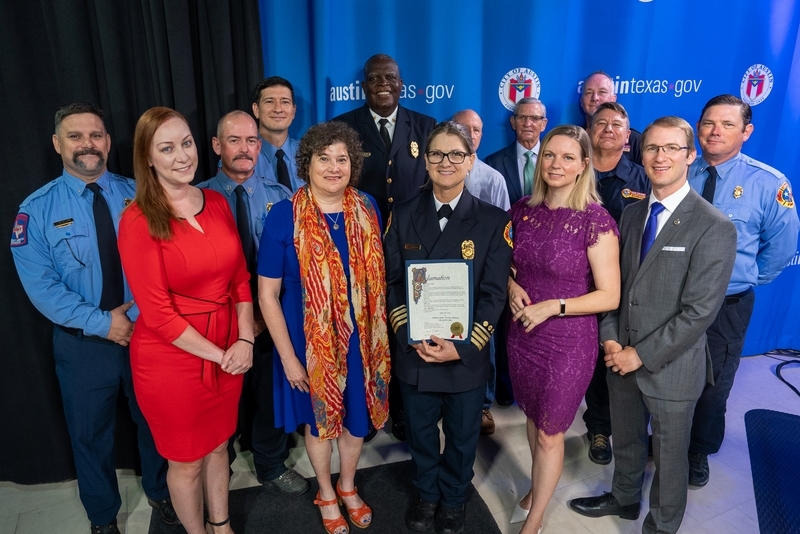The big picture
The Austin area is among the communities at highest wildfire risk nationwide, according to evaluations by Federal Emergency Management Agency and the U.S. Forest Service.
Part of that risk factor is Austin's substantial wildland-urban interface, or WUI, zone where developed and undeveloped areas meet. AFD Wildfire Division Chief Carrie Stewart said Austin is "nationally recognized" for its distinct and spread-out WUI zone.
The WUI zone covers most of the city's outlying areas and features distinct rules for new development based on international code to reduce wildfire risk. It's also been an area of focus for AFD given that the interaction between natural areas and built-out neighborhoods can make for a complicated fire response.
"That’s why people come here; that’s why people love it here, because we do have so much beautiful green space around and within the city," Stewart said. "But it does pose a hazard just with the topography we have, the terrain we have and having the built environment so close to our wildland."
What happened
Firefighting tactics can vary widely between attacking structure fires in neighborhoods and wildfires in open areas. For example, firefighters might focus on extinguishing a fire and rescuing residents from an isolated house fire but let buildings burn and prioritize wider evacuation efforts when facing a wildfire.
To help AFD better prepare for those differences, city officials set aside $300,000 for new WUI-specific education in 2021. To bridge the training gap, the department adopted the International Association of Fire Fighters' Responding to the Interface curriculum that's now being implemented across North America.
Council member Alison Alter, who represents portions of West Austin most prone to wildfires and led the call to fund the training, said the new education was a "major milestone" in the city's fire resiliency efforts.
"You need to have firefighters who are ready for wildfire," she said. "You don’t want to be getting into a wildfire for the first time never having thought about how you handle this differently than what you’re used to ... where you’re trained to go in the house and do X, Y and Z for structure fire, but now you’re dealing with wildfire, so what do you do differently?"
Alter recognized the training update with a civic proclamation marking “Wildland-Urban Interface Training Recognition Day" in July.

With the added training budget and initial grant support from the IAFF, AFD worked to get the city's hundreds of firefighters up to speed on WUI response. Given the department's shift structure, Stewart said the process saw instructors give up portions of their weekends over more than two years to train the entire force.

"Aside from 2011, ... we really don’t have that Rolodex of experience to draw from in this environment," she said. "This training is kind of helping us populate that Rolodex so people do have some sort of experience, some sort of training to draw on that they can use in the future."
What's next
Building on the past few years' training efforts, officials noted the WUI update is intended to maintain Austin's fire preparation going forward as well.
Stewart said the department is wrapping the curriculum into new cadet training and will also share the playbook with other Central Texas agencies, some of which have already reached out for the update.
“Now we’ll be able to help [emergency services districts] and folks in Travis County," Alter said. "They can now hire our firefighters to train them because we’ll have people in the area who know how to do it."
For now, Stewart said Austin is in a "more comfortable" position compared to last year thanks to lower temperatures and more precipitation so far—although AFD remains on the alert.
"We’re still paying attention to the weather patterns, making sure that if we get a lot of heat and this precipitation that we currently have goes away, we’re checking on how that could affect our potential for wildfire ignition and for wildfire to carry," Stewart said.
Central Texas residents can sign up for emergency notifications, including for wildfires, through the WarnCentralTexas system.
One more thing
Austin is in the process of revising local regulations for the approximately 40% of the city in the WUI zone. City Council is expected to consider the WUI code updates later this year.
Residential lot size reform under the second phase of the "HOME" initiative will also have a delayed implementation in WUI areas this fall.





